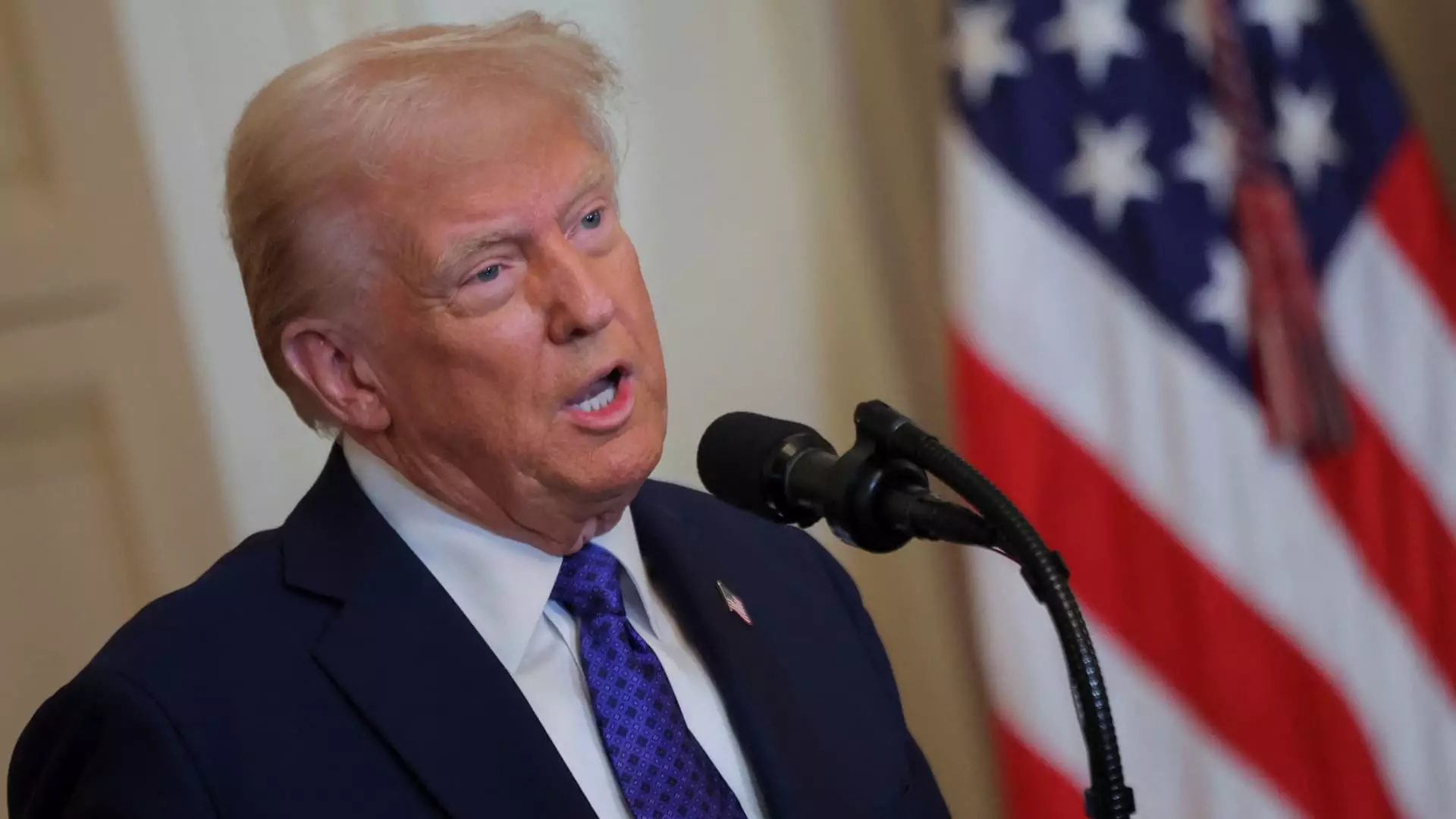The financial markets are continuously shaped by political climates, and the Trump administration has been a significant influencer of market dynamics. Interestingly, two distinct categories within the market appear to be thriving: the large financial institutions and small-cap stocks. While they operate in different spheres, both sectors are experiencing unique momentum driven by a wave of deregulation, strategic reshoring, and consumer-centric policies.
The Resurgence of Big Banks
The winds of change driven by the Trump administration are particularly favorable for large financial institutions. Analysts like John Davi from Astoria Portfolio Advisors believe that deregulation will provide a strong foundation for the financial sector. The easing of regulatory burdens is expected to facilitate significant growth in both initial public offerings (IPOs) and merger and acquisition activities, sparking a revitalization within the banking industry.
Davi points out that prior to these political shifts, many major banks were already demonstrating robust fundamentals that made them attractive prospects for investors. The current bullish sentiment surrounding major institutions such as Goldman Sachs, JPMorgan Chase, and Bank of America is noteworthy; these firms reached record highs recently, signaling strong investor confidence. Consequently, the Invesco KBW Bank ETF is emerging as a favorable investment vehicle due to its focus on these key players. Statistics show that the ETF has surged almost 10% since the beginning of the year and boasts an impressive 49% gain over the past year—metrics that affirm the bullish outlook for the banking sector.
However, while the prospects for large banks look bright, there is an argument to be made about the sustainability of this growth. The continuous cycles of deregulation may not be a long-term strategy but rather a temporary boost. Investors need to remain vigilant; banking stocks can often be volatile and susceptible to broader economic fluctuations. Comprehensive risk management strategies will be essential for those invested in this sector.
Small-Cap Stocks: Responding to Domestic Focus
In contrast to large-cap financial institutions, the outlook for small-cap stocks appears equally positive, although driven by different underlying factors. VettaFi’s Todd Rosenbluth notes that small-cap companies are highly adaptable to changing market environments, especially under policies geared towards domestic production and economic strength. The ongoing prompts to reshore manufacturing jobs and enhance domestic infrastructure create an environment where smaller businesses thrive, largely due to their limited exposure to global markets.
Rosenbluth recommends two noteworthy investment vehicles: the T. Rowe Price Small-Mid Cap ETF and the Neuberger Berman Small-Mid Cap ETF. Both funds offer strategic exposure to a range of smaller companies poised to benefit significantly from the current political and economic landscape. Additionally, the VictoryShares Small Cap Free Cash Flow ETF is highlighted for its focus on quality small-cap companies with robust growth trajectories. It maintains a selectivity criterion, ensuring investments are directed towards firms with healthy cash flows, thus promising more sustainable growth.
As investors evaluate the landscape of small-cap stocks, it’s crucial to scrutinize performance metrics beyond just price appreciation. While the Russell 2000 index, which tracks smaller companies, has seen an uplift of about 17%, this number alone does not encapsulate the risk-reward profile associated with small-cap investments. The higher volatility inherent in smaller stocks demands a nuanced understanding of company fundamentals, market trends, and individual company risks.
The Trump administration’s policies have simultaneously propelled two disparate market segments: large financial institutions and small-cap companies. Each sector presents its unique opportunities and challenges. While the banks benefit from deregulation and enhanced operational freedom, small-cap stocks are thriving in an environment that favors domestic growth. As always, investors should conduct thorough research, balancing potential rewards against market risks, to make informed investment decisions in these distinct segments as they navigate the ever-evolving political and economic landscape.

